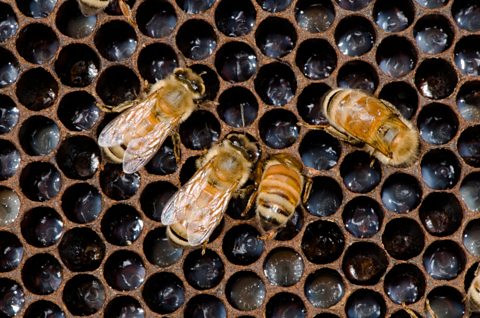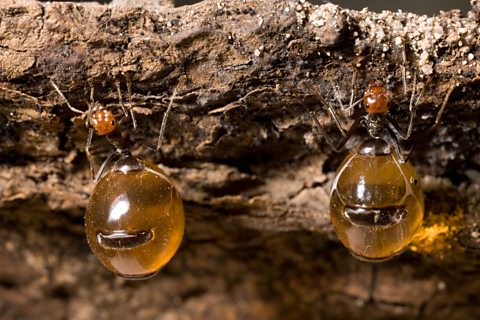Social insects

Some insect societies, eg bees, wasps, ants and termites have evolved complex social behaviour which has resulted in close co-operation between individuals when caring for their young. Each colony or hive is made up of related individuals who are differentiated into distinct groups, or castes.
The reproductive caste is made up of a queen (a fertile adult female) and drones (fertile adult males). It is their role to reproduce and populate the colony.
The worker caste is made up of sterile individuals. These will take on all the other roles:
- feeding and caring for eggs and larvae
- finding and gathering food
- building and repairing the nest or hive
- defending the colony

Members of the sterile caste will carry out particular behaviours to benefit the colony. For example honey bees will collect pollen to feed the colony. When they find a source of food they will communicate the direction and distance the food is from the hive using a waggle dance.
In ants and termites, workers will develop into distinct body-types to reflect specific roles. For example some workers may develop larger heads and mandibles to act as soldiers and defend the colony. Some honeypot ants develop swollen abdomens that hold large amounts of food that can be regurgitated to feed other members of the colony.